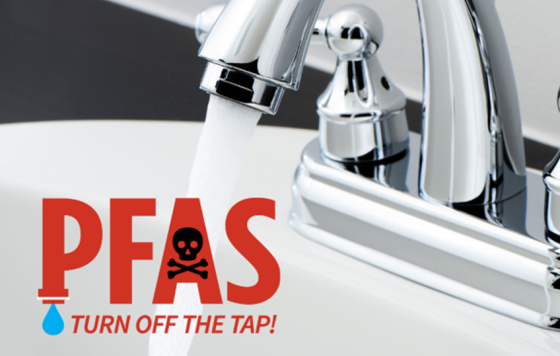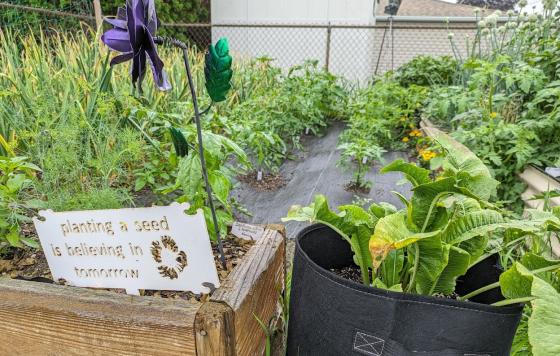
My Summer as a Clean Water Action Fellow
We are not separated by land but connected by water. Water transcends being a mere substance; it's a profound symbol of connection and continuity that permeates our lives. It unites lands, weaves communities together, and reflects the values we cherish. When I embarked on my Environmental Fellowship placement with Clean Water Action and the Yale School of the Environment, I discovered an opportunity that echoed my true life's mission: the sustainable management of water resources for the benefit of both present and future generations. This placement complements my current graduate research on water resource management and serves as a critical step towards my goal of becoming the Executive Director of the California Department of Water Resources.
My experience at Clean Water Action in Washington, D.C., has been more than a professional engagement; it has been an enlightening journey bridging my career aspirations with my core environmental values. As part of the National Campaigns team, I have delved into the intricate impacts of water pollution, particularly focusing on marginalized communities through the lenses of the Safe Drinking Water Act and the Clean Water Act. These legal frameworks, coupled with my hands-on analysis, have allowed me to explore social and environmental topics that resonate with my lifelong commitment to water preservation and community development.
My work in understanding and addressing the relationship between water pollution and communities disproportionately affected by environmental injustices has not only been intellectually stimulating but has also provided a unique opportunity to contribute to real-world solutions. This experience has further solidified my belief that access to clean water is an essential human right and supports my commitment to making a lasting positive impact.
My main task at Clean Water Action is to analyze the relationship between water pollution and marginalized, low income, and/or communities of color. Using data from the Environmental Protection Agency’s (EPA) Enforcement and Compliance History Online (ECHO) database, U.S. Census Bureau, and Environmental Justice Screen, I am identifying facilities located in marginalized communities that have violated the terms of their Clean Water Act permit limits, as well as facilities located in marginalized communities with outdated permits. My findings will be used by Clean Water Action to prioritize future advocacy efforts. This extensive data analysis demands more than mere technical skill; it requires a profound understanding of policy and social equity. The nature of this work is directly aligned with my personal aspirations to conserve water resources, protect public health, and extend assistance to marginalized communities.
As part of my fellowship experience, I’ve also been learning more about PFAS, or per-and poly-fluoroalkyl substances. This complex class of chemicals, also known as "Forever Chemicals," are found in firefighting foam as well as everyday household products, such as non-stick cookware, food packaging, personal care products, and cleaning supplies. There is growing concern about these toxic chemicals leaching into our waterways and food supply. According to a 2022 study by the Waterkeeper Alliance, 83% of waterways tested across the United States were found to contain at least one type of PFAS, a figure that likely underestimates the true extent of contamination. The alarming impact of PFAS on human health, including links to increased risks of cancer, higher cholesterol levels, lower infant birth weights, reduced fertility, and developmental delays in children, has resonated with my fundamental concerns and values. Through my work, I am actively contributing to efforts to reduce and mitigate these harmful impacts, aligning my daily activities with my long-term vision and underscoring the urgency of protecting our water resources for future generations.
During my time at Clean Water Action, I’ve also found myself submerged in the intricate world of water policy. In July, I attended a Congressional Roundtable panel on the impacts of the recent Sackett vs. EPA Supreme Court decision, which eliminated Clean Water Act protections for most wetlands and some streams. These sessions provided critical insights into the impacts of the Supreme Court decision on the management of Waters of the United States (WOTUS), an issue of vital importance to citizens all over the country. This Congressional roundtable gave me a better understanding of the different perspectives of politicians, academics, state regulators, and other organizations all concerned by the impact Sackett vs. EPA has on our nation’s water resources.
My participation didn't stop there; I also had the opportunity to sit in on a House of Representatives vote on a bill to revise the Endangered Species Act (ESA). This firsthand exposure to the legislative process, both through the roundtable panel and the House vote, not only enriched my understanding of federal public policy but also offered a glimpse into the machinery of governance that shapes our environmental laws. These experiences, while valuable on their own, have also deepened my appreciation for the complex interplay between legislation, policy, and the environmental goals I strive to achieve in my future roles as a water industry leader.
In Marc Reisner's words, "Reason is the first casualty in a drought." My aim is not to be a casualty but a composed leader and environmental steward. My fellowship with Clean Water Action has been more than just a summer placement; it has been a steppingstone towards my goal of preserving water resources and a vital experience in shaping my future. By bridging the gap between academic research and practical water resource management, I am actively laying the foundation for my dreams of protecting water for generations to come.



